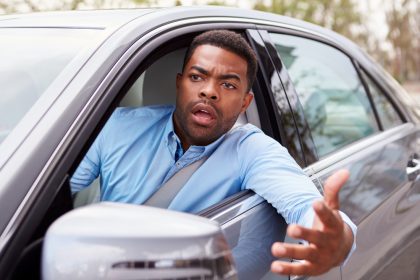Falls outside the home pose significant injury risks that increase with age and environmental factors. Understanding prevention strategies and hazard recognition helps maintain independence while reducing the likelihood of serious accidents in outdoor settings.
Falls occurring outside the home environment present unique challenges compared to indoor accidents, as outdoor spaces contain variable terrain, weather conditions, and unpredictable hazards that require constant awareness and preparation. These outdoor falls account for a substantial portion of serious injuries, particularly among older adults, though people of all ages face risks when navigating sidewalks, parking lots, trails, and other exterior environments.
The consequences of outdoor falls often prove more severe than indoor incidents due to harder surfaces like concrete and asphalt, greater fall distances from steps and curbs, and potential delays in receiving assistance. Weather conditions, lighting variations, and unfamiliar environments compound these risks, making proactive prevention strategies essential for maintaining safety during daily activities and recreational pursuits.
Understanding outdoor fall risk factors
Outdoor environments present numerous hazards that differ significantly from controlled indoor spaces. Uneven surfaces create one of the most common fall triggers, including cracked sidewalks, uneven pavement transitions, loose gravel, and natural terrain variations. These surface irregularities catch feet unexpectedly, particularly when attention focuses on other activities like conversation or mobile device use.
Weather conditions dramatically affect outdoor fall risk through multiple mechanisms. Rain creates slippery surfaces on smooth materials like concrete, tile, and painted surfaces. Ice formation during freezing temperatures transforms ordinary walkways into treacherous hazards that remain dangerous even after temperatures rise if ice persists in shaded areas. Snow coverage masks underlying hazards like curbs, holes, and surface changes while creating unstable footing.
Lighting conditions significantly influence fall risk, with insufficient illumination preventing proper hazard identification. Transitions between different lighting levels, such as moving from bright sunlight into shadowed areas, temporarily impair vision and depth perception. Glare from wet surfaces or reflective materials can obscure obstacles and surface changes.
Footwear choices affect traction and stability on various outdoor surfaces. Smooth-soled shoes provide inadequate grip on wet or slippery surfaces, while worn treads lose their effectiveness over time. High heels create instability on uneven surfaces and increase the likelihood of ankle rolling. Loose-fitting shoes can catch on obstacles or slip off unexpectedly.
Physical factors including fatigue, medication effects, vision changes, and balance issues increase outdoor fall susceptibility. Carrying packages or bags affects balance and limits the ability to use arms for stability. Rushing or feeling time pressure leads to reduced attention to environmental hazards and poor decision-making about safe routes.
Weather-specific protection strategies
Different weather conditions require specific approaches to fall prevention that address the unique hazards each presents. Rain protection involves more than simply staying dry; it requires adjusting movement patterns and route choices to minimize exposure to slippery surfaces.
During rainy conditions, choose routes that avoid painted lines on pavement, smooth concrete surfaces, and areas where water accumulates. Metal surfaces like manhole covers and grates become extremely slippery when wet. Take shorter steps and walk more slowly to maintain better control, allowing more time to react to slippery spots. Hold handrails when available, but test their stability before relying on them completely.
Winter weather protection requires comprehensive preparation including appropriate footwear with good tread patterns or ice grips. Salt and sand improve traction but don’t eliminate all hazards, particularly in areas that don’t receive regular treatment. Black ice forms invisibly on surfaces and poses extreme danger, particularly on bridges, overpasses, and shaded areas that remain frozen longer.
During winter months, allow extra time for travel to avoid rushing across potentially hazardous surfaces. Use designated walkways whenever possible, as these receive priority treatment for ice and snow removal. Carry a small flashlight to improve visibility of surface conditions, particularly during early morning or evening hours when lighting may be inadequate.
Hot weather creates different hazards including heat exhaustion that impairs judgment and coordination. Dehydration affects balance and reaction time, while excessive sweating can make hands slippery when gripping railings or supports. Plan outdoor activities during cooler parts of the day and stay well-hydrated to maintain optimal physical function.
Windy conditions require awareness of debris that may blow across walkways and the destabilizing effect of strong gusts, particularly when carrying umbrellas or large items. Sudden wind gusts can cause loss of balance, especially when combined with other risk factors like uneven surfaces or wet conditions.
Footwear and equipment considerations
Proper footwear selection serves as the foundation of outdoor fall prevention, with different activities and conditions requiring specific shoe characteristics. Athletic shoes with good tread patterns provide excellent traction on most dry surfaces but may not offer adequate protection in wet or icy conditions.
Sole material affects traction significantly, with rubber compounds generally providing better grip than leather or synthetic materials. Tread pattern depth and design influence performance on different surfaces, with deeper, more aggressive patterns performing better on loose or uneven terrain. However, very deep treads can collect debris that reduces traction on smooth surfaces.
Fit and support features prevent shoes from slipping or moving unexpectedly during walking. Shoes should fit snugly without being tight, with adequate room for toe movement but no heel slippage. Lacing systems should provide secure closure without creating pressure points that affect circulation or comfort.
For icy conditions, removable ice grips or cleats provide enhanced traction that can be added to regular shoes when needed. These devices feature metal spikes or rubber studs that dig into ice and snow for improved stability. However, they require careful removal before entering buildings to prevent damage to indoor flooring and avoid creating new slip hazards.
Walking aids like canes or walking poles provide additional stability and support when navigating challenging outdoor terrain. These tools help distribute weight, provide extra points of contact with the ground, and can be used to test surface stability before committing full weight. Proper sizing and technique instruction ensure maximum benefit from these aids.
Emergency equipment like small flashlights, cell phones, and identification information become important when venturing into areas where assistance might not be immediately available. Personal alarm devices can summon help if a fall does occur in isolated areas.
Five key strategies for safe outdoor navigation
Implementing systematic approaches to outdoor safety helps establish habits that reduce fall risk across various environments and conditions:
- Route planning involves choosing safer paths even when they require additional time or distance. Avoid shortcuts through unfamiliar areas or across unstable surfaces. Stick to well-maintained sidewalks and designated walkways whenever possible. Identify rest areas and safe stopping points along longer routes.
- Environmental scanning requires constantly assessing upcoming hazards and planning appropriate responses. Look ahead several steps to identify surface changes, obstacles, or weather-related hazards. Check behind and beside you periodically to maintain awareness of changing conditions and other pedestrians or vehicles.
- Pace management means adjusting walking speed to match conditions and personal capabilities. Slower speeds allow more time to identify and respond to hazards while maintaining better balance and control. Allow extra time for travel during challenging conditions rather than rushing to meet schedules.
- Support utilization involves taking advantage of available handrails, walls, and other stable surfaces for additional stability when navigating steps, ramps, or uneven areas. Test the stability of any support before relying on it fully, as some railings or barriers may be loose or damaged.
- Attention management requires minimizing distractions that divert focus from environmental hazards. Avoid using mobile devices while walking, particularly in challenging conditions or unfamiliar areas. Save conversations and other activities for safe stopping points rather than attempting to multitask while navigating hazardous areas.
Specific outdoor environments and their challenges
Different outdoor settings present unique fall risks that require tailored prevention approaches. Parking lots combine vehicle traffic with pedestrian hazards including painted lines that become slippery when wet, speed bumps that create trip hazards, and oil stains that reduce traction. Stay in designated pedestrian areas when available and remain alert for vehicles that may not see pedestrians clearly.
Public transportation areas like bus stops and train platforms present crowded conditions, uneven surfaces, and time pressures that increase fall risk. Arrive early to avoid rushing and position yourself away from platform edges until transportation arrives. Use handrails when boarding and exiting vehicles, and wait for complete stops before moving toward doors.
Shopping centers and outdoor malls feature varying surface materials, frequent elevation changes, and high pedestrian traffic. Escalators require particular attention, with proper foot placement and firm grip on handrails essential for safety. Automatic doors and revolving doors can create unexpected obstacles if they malfunction or operate unpredictably.
Parks and recreational areas offer natural beauty but present challenges including uneven trails, root systems that create trip hazards, and surfaces that may be unstable after rain. Stick to designated paths when possible and carry appropriate safety equipment for longer hikes or remote areas.
Construction zones create temporary hazards that change frequently and may not be clearly marked. Avoid these areas when possible, and when passage is necessary, follow designated detour routes and pay extra attention to surface conditions and overhead hazards.
Technology and safety tools
Modern technology offers various tools that enhance outdoor safety and fall prevention. Smartphone apps can provide weather alerts, lighting conditions, and route planning assistance that helps avoid hazardous areas. GPS navigation systems can identify safer alternative routes when primary paths present dangers.
Wearable devices like fitness trackers and smartwatches often include fall detection features that can automatically summon assistance if a fall occurs. These devices may also monitor activity levels and remind users to take breaks or adjust pace based on environmental conditions.
Weather monitoring tools provide detailed information about current and forecasted conditions that affect outdoor safety. Real-time radar shows precipitation patterns, while temperature tracking helps predict ice formation and other weather-related hazards.
Emergency communication devices ensure the ability to summon help even in areas with poor cellular coverage. Personal locator beacons and satellite communicators provide reliable emergency contact capabilities for outdoor enthusiasts venturing into remote areas.
Lighting technology including LED flashlights and headlamps improve visibility during low-light conditions. Modern devices offer multiple brightness settings and long battery life while remaining compact and easy to carry.
Recovery and emergency response
Despite best prevention efforts, falls may still occur, making knowledge of proper response procedures important for minimizing injury and obtaining appropriate help. Immediate assessment after any fall should determine whether serious injury has occurred and whether movement is safe.
Check for obvious injuries including severe pain, deformity, or inability to move normally before attempting to stand. If serious injury is suspected, remain still and call for emergency assistance rather than risking additional harm through movement. Even seemingly minor falls should be evaluated carefully, as adrenaline can mask pain and injury initially.
When getting up after a fall appears safe, do so slowly and carefully. Roll to your side, then push up to hands and knees before using a stable support to stand gradually. Take time to assess your condition before continuing activities, as delayed pain or dizziness may indicate injuries not immediately apparent.
Emergency contact information should be easily accessible and include local emergency numbers, personal emergency contacts, and medical information relevant to treatment decisions. Medical alert jewelry or smartphone medical ID features help emergency responders access critical health information if the person cannot communicate effectively.
Follow-up medical evaluation may be warranted even after seemingly minor falls, particularly for older adults or those with underlying health conditions. Some injuries like concussions or internal bleeding may not produce immediate symptoms but require medical attention.
Building long-term outdoor safety habits
Developing consistent safety practices requires integrating fall prevention strategies into daily routines until they become automatic responses. Regular practice of safe navigation techniques in low-risk environments builds skills and confidence for more challenging situations.
Physical fitness maintenance supports outdoor safety through improved strength, balance, and coordination. Regular exercise programs that include balance training, strength building, and flexibility work help maintain the physical capabilities necessary for safe outdoor navigation.
Vision and hearing health directly affect outdoor safety capabilities. Regular examinations ensure optimal sensory function, while appropriate corrective devices help maintain environmental awareness necessary for hazard identification.
Medication management includes understanding how various medications affect balance, coordination, and judgment. Timing outdoor activities to minimize the impact of medications that cause dizziness or drowsiness helps reduce fall risk.
Social support systems provide assistance and accountability for outdoor safety practices. Walking with others improves safety through shared hazard awareness and immediate help availability if problems arise.
Protecting yourself from falls outside the home requires vigilance, preparation, and consistent application of safety principles across various environments and conditions. The combination of appropriate equipment, environmental awareness, and smart decision-making significantly reduces outdoor fall risk while maintaining the independence and quality of life that outdoor activities provide. By understanding the unique challenges of different outdoor environments and developing systematic approaches to navigation safety, individuals can continue enjoying outdoor spaces while minimizing their risk of serious injury from falls.















